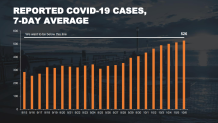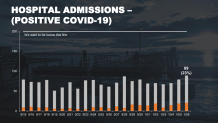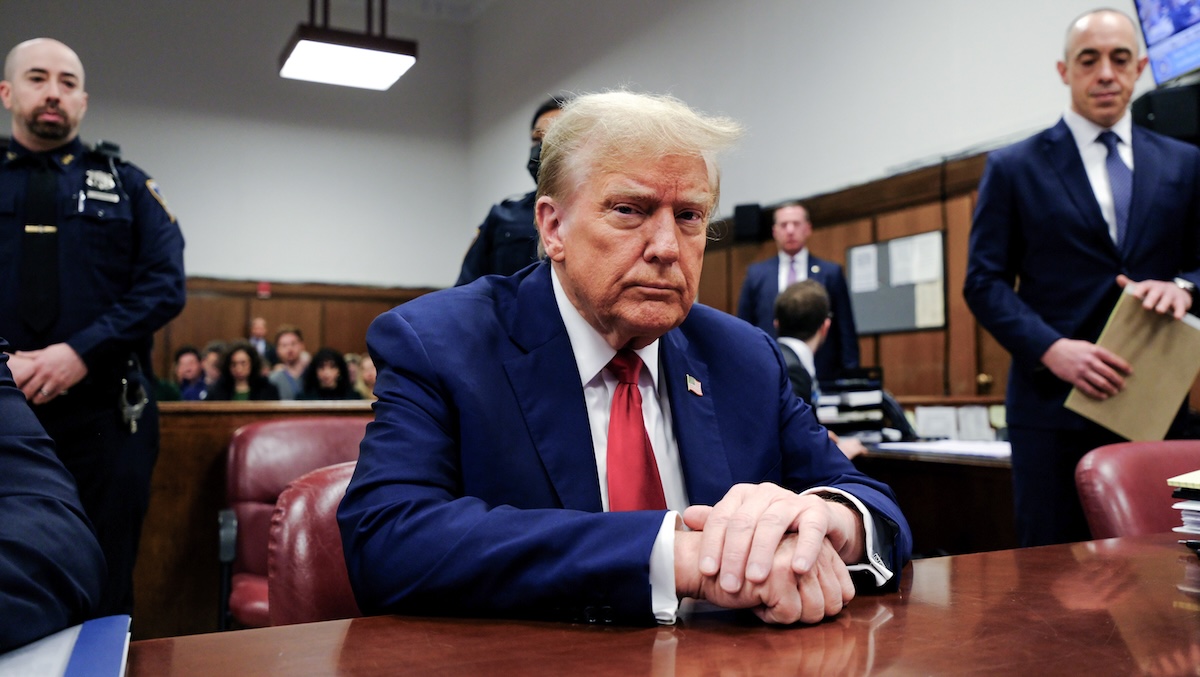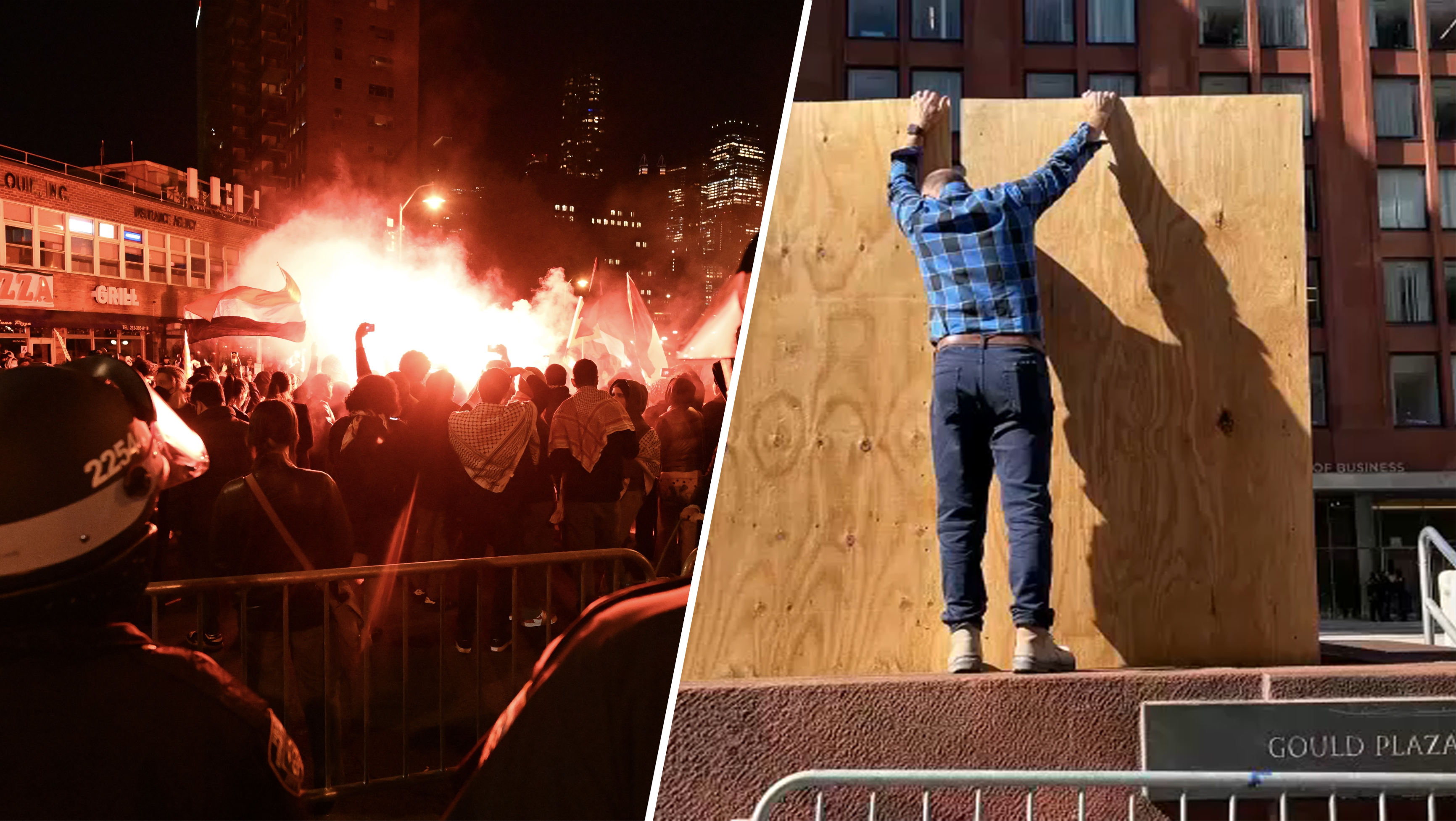What to Know
- New York and New Jersey are both battling upticks in COVID cases in certain areas of their states; both governors reported months-long highs in hospitalizations on Thursday
- Gov. Andrew Cuomo unveiled a sweeping slate of new restrictions for cluster zones, color-coding them 'red,' 'orange' or 'yellow' by risk; red areas see total shutdowns. The rules are in effect for at least 14 days
- In New Jersey, Gov. Phil Murphy, asked about imposing stricter rules on indoor gatherings, said Thursday that "everything is on the table"
The governors of New York and New Jersey both reported months-long highs in total COVID hospitalizations Thursday as officials in both states work to contain burgeoning clusters that threaten the hard-earned progress made since spring.
In New York, Gov. Andrew Cuomo said 754 people in total were hospitalized for COVID as of Thursday, the highest number since July 16. In New Jersey, Gov. Phil Murphy noted 652 hospitalizations, the highest number since Aug. 5; he also noted the highest daily new COVID case total since late May.
Cuomo responded to soaring positivity rates in certain parts of New York -- areas of Brooklyn, Queens and Rockland, Orange and Broome counties this week -- by implementing a sweeping slate of new restrictions based on risk. The highest-risk hotspots in the city saw nonessential business and schools shut down all over again as of Thursday, as well as new restrictions reimposed on gathering sizes that have infuriated some in the ultra-Orthodox community to the point of protest.
Asked whether indoor gatherings could see renewed restrictions in New Jersey, Murphy said Thursday that "every option remains on the table. Could we see some move on indoor gatherings? Perhaps." He noted there was no evidence that indoor dining, which the state resumed after a delay last month, was contributing.
New Jersey's health commissioner said Thursday that about 15 percent of that state's new cases may be tied to September religious services, which is when the holiest days of the Jewish calendar were celebrated. She pointed to 206 new cases in Lakewood, which has seen positivity rates soar beyond the statewide average, comprised of predominantly white, non-Latino men ages 19 to 49.
The clusters in New York also disproportionately encompass ultra-Orthodox Jewish communities. Twenty hotspot ZIP codes statewide have a positivity rate more than five times the statewide average (5.8%). As daily cases rise to recent highs, hospitalizations have ticked up -- both statewide and within New York City itself. The city's daily case average topped 500 this week for the first time in months and has continued to tick higher each day since. Hospitalizations tend to see an uptick after an increase in cases. Sadly, more death may follow.


In the city, Mayor Bill de Blasio had been tracking hotspot areas for weeks, adding more ZIP codes to a watchlist as the clusters spread outward. The shutdown plan Cuomo unveiled earlier this week is much more geographically narrow than the closures de Blasio had proposed by ZIP code, leading community members within those color-coded red, orange and yellow zones to allege unfair targeting.
News
Cuomo insists the new restrictions are based on science and clusters in areas that, in his view, have flouted the state’s existing virus-safety rules.
"The rules weren't being enforced because the communities didn't want to follow them. I understand that but that's why we are where we are - make no mistake. And this can't be just, we come up with a new rule because if it's just another rule and the rule isn't enforced, then we'll be right where we were," Cuomo said.
The new rules in effect for areas of Brooklyn, Queens, and Rockland and Orange County are similar to the ones first put in place over six months ago when New York City was the national epicenter of the pandemic. Heavy fines of up to $15,000 a day will be issued for those in the city who violate mass gathering rules and up to $1,000 a day for social distancing and mask violations, the mayor said.
There are three different levels of restrictions, according to the color-coded maps unveiled Tuesday by the governor's office. The highest-risk areas are colored red, surrounding areas in orange and precautionary spots in yellow. Schools in the red zones were closed earlier this week by Cuomo, while schools in the orange zones switched all-remote Thursday, de Blasio said. Those shaded yellow can remain open to in-person learning but must conduct weekly testing of students and staff.
Already, those have caused confusion. One public school in Forest Hills, Queens, which has been identified as a cluster area by the state, was shaded orange in the state's initial release of the map, which meant a mandatory switch all-remote. The school communicated that message to families Wednesday afternoon, only to find a slightly updated version of the map later put it in a yellow zone, which means in-person learning can go on. Parents got a reversal message that night.
There's no definitive timetable for the restrictions either. They're in place for a minimum of two weeks, though positivity rates tend not to revert to a lower number as quickly as they rise, given the nature of the spread. They could be in effect for a longer period of time, depending on the infection rate, de Blasio said.
Earlier this week, he urged patience, acknowledging this will be a difficult "few weeks" for New Yorkers. But he preached patience.
"It's up to all of us," de Blasio said on the eve of the restrictions taking effect. "It will take hard work and discipline and certainly there will be sacrifice. If we act quickly and decisively we can overcome this for all of us, for the whole city. We need to stop this outbreak dead in its tracks."
Overall, New York City and state infection rates remain low. The city's infection rate hit 1.2 percent Thursday and the statewide rate 1.3 percent, though the seven-day rolling averages for both remain between 1 and 1.2 percent, according to state data. In the cluster counties, the positivity rates are much higher. Rockland County saw a 7.2 percent daily positivity rate Thursday. Brooklyn and Queens had seen daily rates above 2 percent, but both fell below that Thursday.
Daily Percentage of Positive Tests by New York Region
Gov. Andrew Cuomo breaks the state into 10 regions for testing purposes and tracks positivity rates to identify potential hotspots. Here's the latest tracking data by region and for the five boroughs. For the latest county-level results statewide, click here
Source: ny.gov
New York has combatted upticks in certain areas successfully in the past, including in Western New York and the Southern Tier regions, which are seeing lower infection rates than they were a month ago amid heightened testing.
That focus on testing continues. New York conducted almost 146,000 tests Wednesday, its highest daily number amid the pandemic to date as Cuomo executes a targeted strategy for the hotspots while minding the state overall.
This is not April, which saw a week-long stretch when roughly 800 New Yorkers were dying a day. Today, that daily toll is closer to 10, which is infinitely lower but still noticeably higher than the low single-digit tolls it has seen in recent weeks.
The new restrictions are limited to just about 6 percent of New York state's population, Cuomo said Thursday. That same small fraction of the statewide population accounted for almost a quarter of all positive tests the previous day.
Without the new restrictions, Cuomo warns wider spread may be "inevitable."
He previously warned the state's low infection rate may be unsustainable through fall even without the clusters. Fall means chillier weather, which means more indoor activities. It means flu season. It means school -- if they can manage to safely stay open. New Jersey has confirmed 16 outbreaks tied to public school.
The two states together have lost at least 41,700 people to the virus to date, nearly a fifth of the death toll of the entire country, by NBC News estimates.
New York City alone has lost at least 21,000 people, including deaths that probably were caused by COVID but not definitively linked to it by diagnosis. The CDC has said another 5,000 more fatalities could be attributed to it in some way.
Nationally, the death toll has soared in the last two months, topping 213,000 at latest check with more than 7.5 million confirmed cases. Worldwide, COVID-19 has killed more than 1 million people, though officials acknowledge that number is likely a severe undercount.



